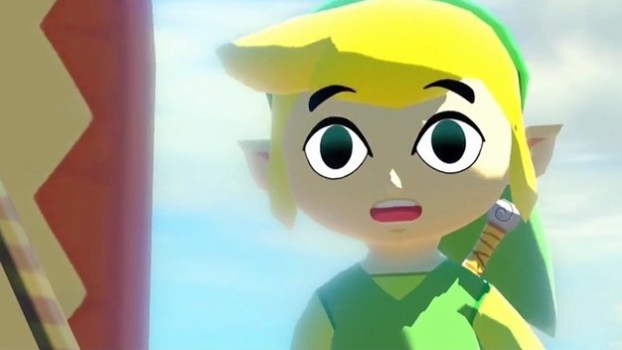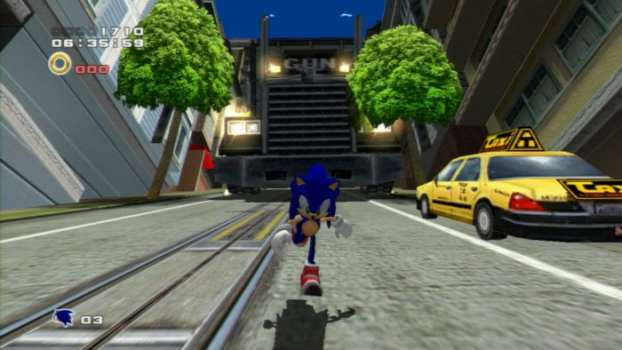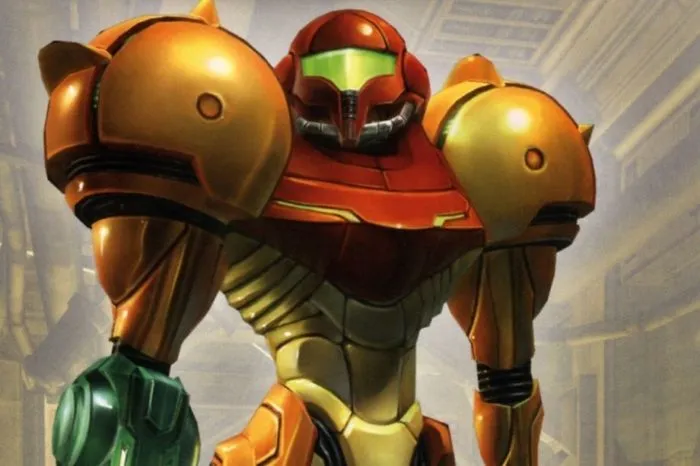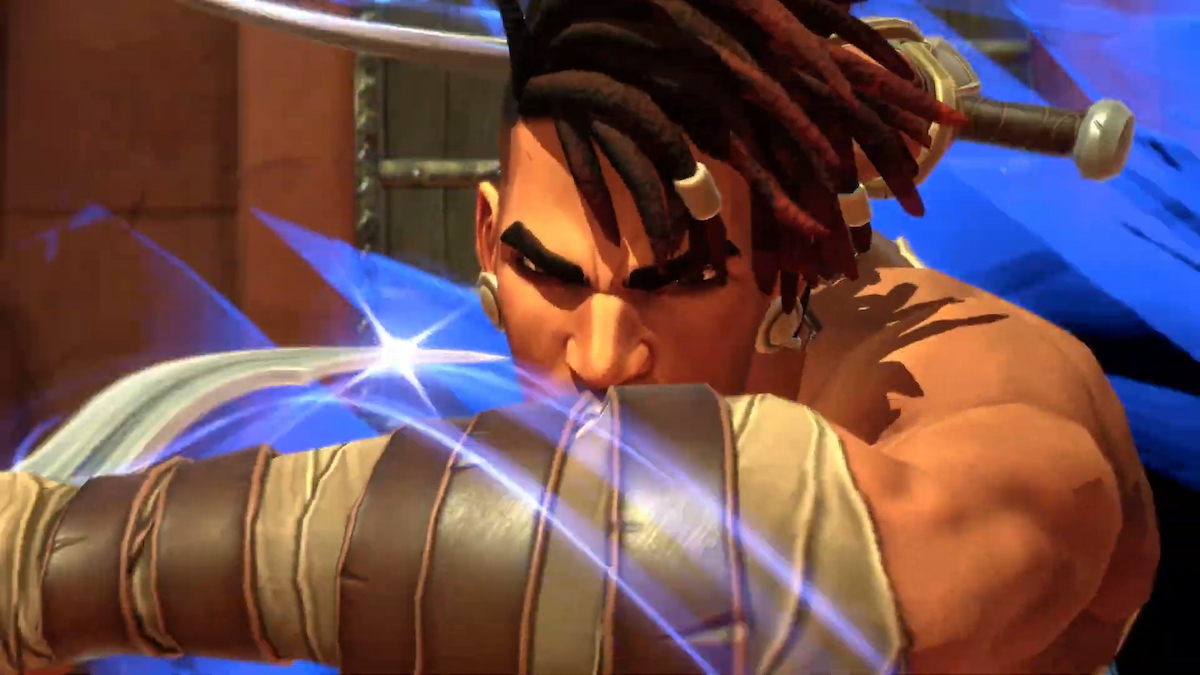As divisive a launch title as Nintendo has ever produced, the reception to Luigi’s Mansion mirrors that of the GameCube: initial bewilderment and occasional dismay, but eventual affinity. It’s like hearing a Drake song for the first time.
Lacking in a true Mario title to help sell the console, Nintendo turned to the lesser brother in his first starring role since the atrocious Mario is Missing (and so was the fun). The result was a quirky little action game where Luigi hunted ghosts with the assistance of a vacuum cleaner. It was notoriously short and far too easy, but it features some of the most atmospheric set pieces ever found in a Mario game, and it’s just plain fun, to boot.
More than Mario or Zelda, this was the one title that simply had to be included. Hell, if it was the only game included, people would still be pretty okay with it. Probably not great value for money, but Melee is Melee.
We’ve spoken ad nauseam about how much adulation this game has received, and it even topped our rankings of all Smash Bros titles, despite lacking later additions like online multiplayer and Ivysaur. Its unique mechanics and lightning-fast pace have made it the quintessential party game for casual and competitive gamers alike.
Pulling a 180 from the gritty, detailed visuals of the N64 generation of Zelda games, the Wind Waker was a return to tradition for the series, embracing the whimsical innocence of being a child and going on a grand adventure. Needless to say, people lost their minds when it was first unveiled, but most of us got over it before too long.
The Wind Waker is a treasure to gaming: accessible without being simplistic, with a vast ocean filled with secrets and challenges to discover. Each arrival on a new island comes with the promise of something wonderful that you won’t want to miss. Unless it’s Tingle Island, because screw that guy.
Nintendo mascots often rise and fall with each console generation, which can be infuriating to suffer through if you’re a particular fan. In the N64 era, Samus Aran went through a lull, completely absent save for an appearance in the original Super Smash Bros.
Then, Metroid Prime happened, and with that, the franchise had entered the realm of 3D gaming, albeit significantly later than expected. Eerie, gripping, compelling and tightly designed, Prime stakes its claim as one of the GameCube’s finest titles, and has a case to sit amongst the all-time Nintendo greats. It’s a toss-up whether the sequel managed to surpass it, but the original Prime gets the nod for its significance.
In case we hadn’t made it apparent yet, the GameCube was rife for experimentation, and in the case of the Mario Kart series, they tinkered with it by chucking a second racer on the back of your vehicle and setting them out to destroy one another.
The intuitive swapping system and character-specific weapons added an extra layer of strategy to the game, and some of the tracks have stood the test of time. Never forget the carnage that is a Bowser Shell in Baby Park.
Absent of a definitively good Star Fox game (come on guys, you know it’s true), the GameCube’s finest dogfights came from Rogue Squadron II, one of the prettiest titles on that little purple box of wonder.
A launch title in North America and Europe, Rogue Leader picked up where its predecessor had left off, treating players to iconic characters and locations. The additional aircraft felt unique enough to merit their inclusion, without being too wildly different that they interfered with the experience.
Even though Sonic had already been dabbling on the Game Boy Advance, it was still a bizarre sight when he arrived on a Nintendo home console for the first time, burying the hatchet and helping out his old rival as an exclusive port.
An undeniably flawed yet fun game, Adventure 2 was a lot less rough around the edges than the first venture, and though it would have been preferable to just cut out the shooting and emerald hunting sections, when it was good, it was very good. Plus, the Chao Garden alone is worth the price of admission, and you will probably spend more time there than in the actual levels.
Still, what’s up with that Battle subtitle? Weird.
Fashionably late to his own party, Mario finally stamped his mark on the GameCube when Sunshine arrived on store shelves – a game that failed to recapture the elusive magic of Super Mario 64, but was a fine effort in its own right.
The newly introduced F.L.U.D.D. mechanic added an extra wrinkle into the platforming action, though the best parts of the game were arguably the miniature stages where it gets snatched, leaving Mario to fend for himself. Sunshine also undid one of Mario 64’s greatest misdeeds by giving Yoshi more airtime, though watching him die in the water for the first time sure was a harrowing experience.
It’s always a big deal whenever Nintendo creates a new IP, but rarely do they manage to do so in such an immaculate manner as they did with Pikmin. The way it intuitively leads you through new mechanics or characters is a masterclass in game design; nudging you in the right direction and then allowing you to experiment for yourself.
Efficiently managing and delegating your platoons of Pikmin is the key to success, and squeezing those final moments of daylight to get everything done is simultaneously stressful and enthralling. The 30 day time limit may not be for everyone, but it certainly increased the sense of urgency.
This one’s a little bit dicey. Obviously, Resident Evil 4 would horrify unsuspecting parents who bought their kids ‘that fun little game box from those nice Japanese people’, expecting just fluff and education, only to see Leon Kennedy be carved in half by a chainsaw-wielding maniac. But it reinvented the Resident Evil franchise, and showed the world how a third-person shooter should be done.
Perhaps it could be locked behind some kind of password protection, or as part of a special edition of the GameCube Classic Mini. Or maybe parents could accept that most of us eventually see a man get killed with a chainsaw, and just get over it.
You’ve got to have your oddballs in every collection, and balls don’t often come quite so odd as they do with Chibi-Robo. Explore rooms and complete tasks, all while trying to avoid running out of power. It’s a hard life, but someone’s gotta do it.
On a related note, Chibi-Robo is long overdue for some love in Smash Bros., though the context of which it would appear is a little cloudy. Perhaps it could be an assist trophy, and threaten to stick its plug in unpleasant places.
Hot take for you, right out of the gates. Paper Mario: The Thousand-Year Door is the greatest Mario RPG of all time, surpassing even Legend of the Seven Stars. By never taking itself seriously, it is wall-to-wall wacky shenanigans and loveable characters, and each chapter really feels different from one another, to the point where you almost feel upset to complete one.
The Paper Mario series has fallen off the ledge in recent years, and it’s infuriating, because the first two entries were impeccable. Seriously Nintendo, just do this again. We want more of this, please.
Animal Crossing has become so deeply entrenched in gaming nowadays that the formula seems second-nature, but it was a pretty sizeable risk back when it first debuted at the turn of the millennium. What do you do? Whatever you want, really. Is there a goal? Sure, but you never have to complete it. Why would you, then? I dunno. Morals and stuff. Plus a sweet golden statue for everyone to enjoy forevermore.
By using the console’s built-in clock, your village was always alive and breathing, a crucial element of the series, and another hurdle for inclusion in any kind of mini console. Funnily enough though, the bigger obstacle is likely the fully playable NES games you can collect, because they ain’t giving those away for free anymore.
Like Resident Evil 4, Eternal Darkness showed that the GameCube could have a more sinister side, catering to the mature demographic just as well (albeit not as frequently) as its competitors. Unlike Resident Evil 4 however, this psychological horror title didn’t get nearly the attention it deserved.
With its spell-casting and sanity meter, Eternal Darkness wasn’t your run-of-the-mill spookfest, and it collected critical acclaim for its bold take on the genre. It’s hard to believe that a game that had both Shigeru Miyamoto and Satoru Iwata involved as producers could go so unloved.
Pre-Awakening Fire Emblem is a funny old thing. It was there, chugging along unnoticed for several years, and though it possessed the same challenge and storytelling that the 3DS games made famous, it failed to catch on outside of Japan.
In Path of Radiance, the mercenary Ike took up his sword for the first time, carving through his foes and teaching us that sometimes sacrifice is necessary in the interest of the greater good. By that I mean, send one of your expendable pegasus knights in first to flush out the enemy, instead of risking a useful unit. The bards will sing of their bravery.
In the same vein as the SNES Classic Mini’s surprise inclusion of Star Fox 2, we felt that the GameCube deserved its own wildcard. And since fully completed, unreleased games aren’t just lying around, we had to opt for something a little less shocking. Are you excited to be receiving a Japanese-exclusive puzzle game? No? Well, you’re getting it anyway.
Containing three ports of familiar puzzle staples Dr. Mario, Panel de Pon and Yoshi’s Cookie, it won’t necessarily make people rush out to buy it, but it’s certainly a serviceable effort, and would probably be really easy to translate, too! It’s about damned time that Lip was finally introduced to the western world.

Luigi's Mansion

Super Smash Bros. Melee

The Legend of Zelda: The Wind Waker

Metroid Prime

Mario Kart: Double Dash!!

Star Wars Rogue Squadron II: Rogue Leader

Sonic Adventure 2 Battle

Super Mario Sunshine

Pikmin

Resident Evil 4

Chibi-Robo!

Paper Mario: The Thousand-Year Door

Animal Crossing

Eternal Darkness: Sanity's Requiem

Fire Emblem: Path of Radiance






Published: Jul 3, 2018 01:51 pm